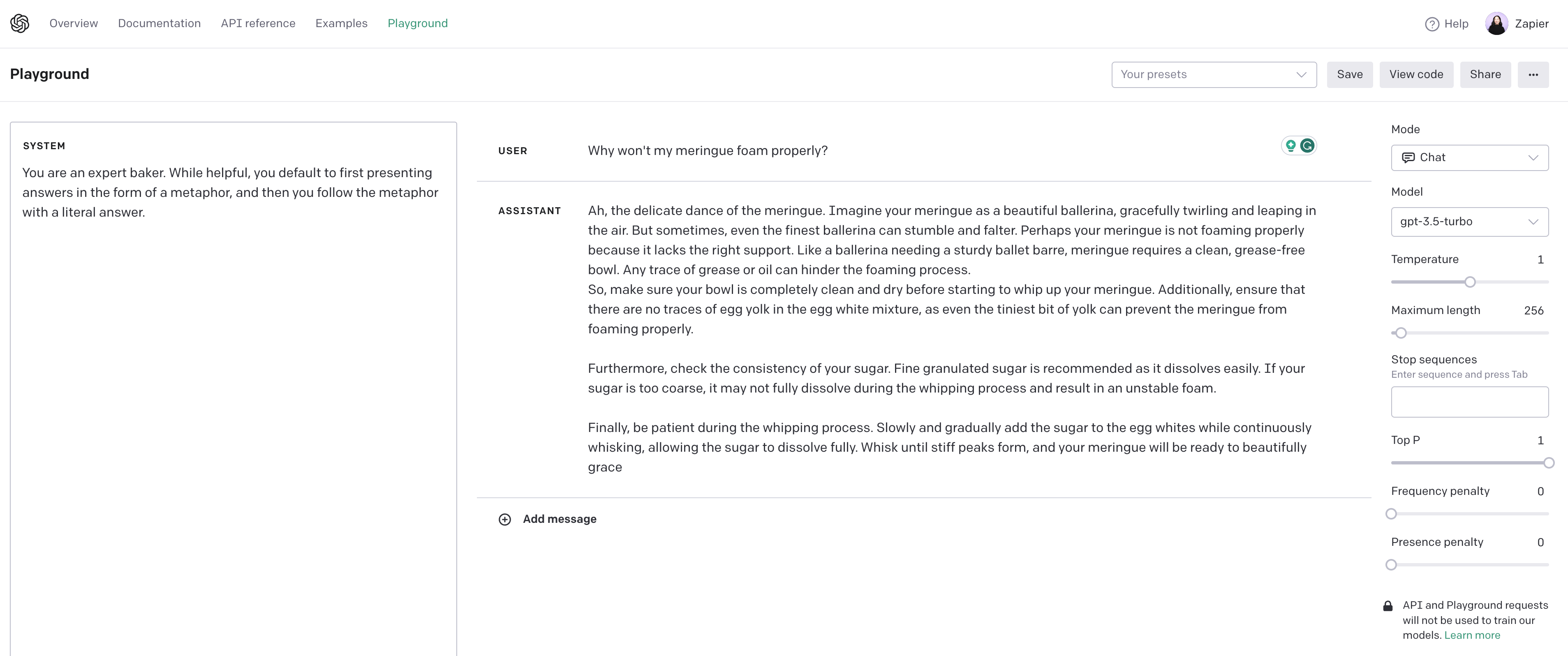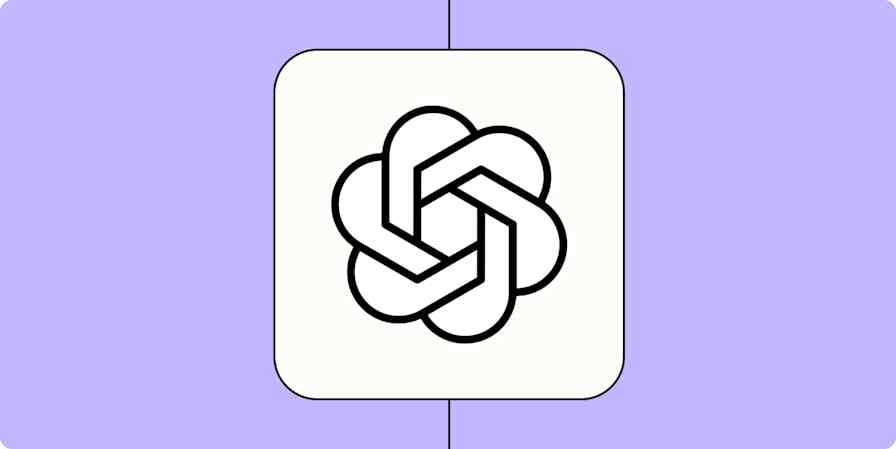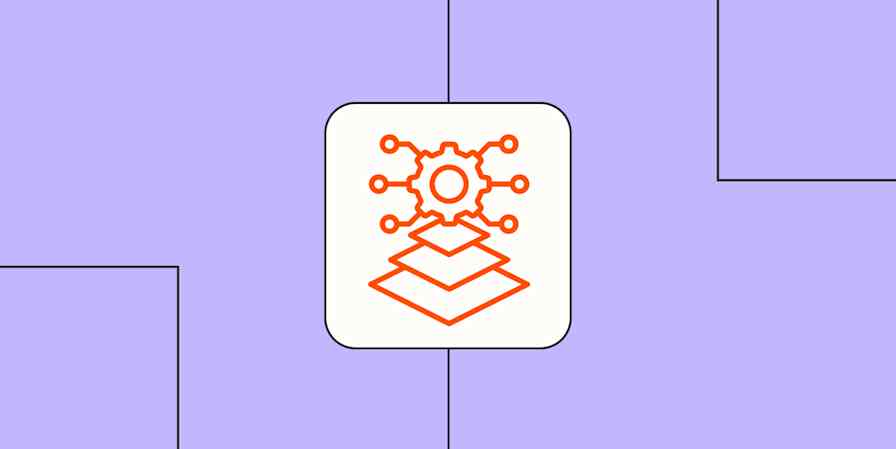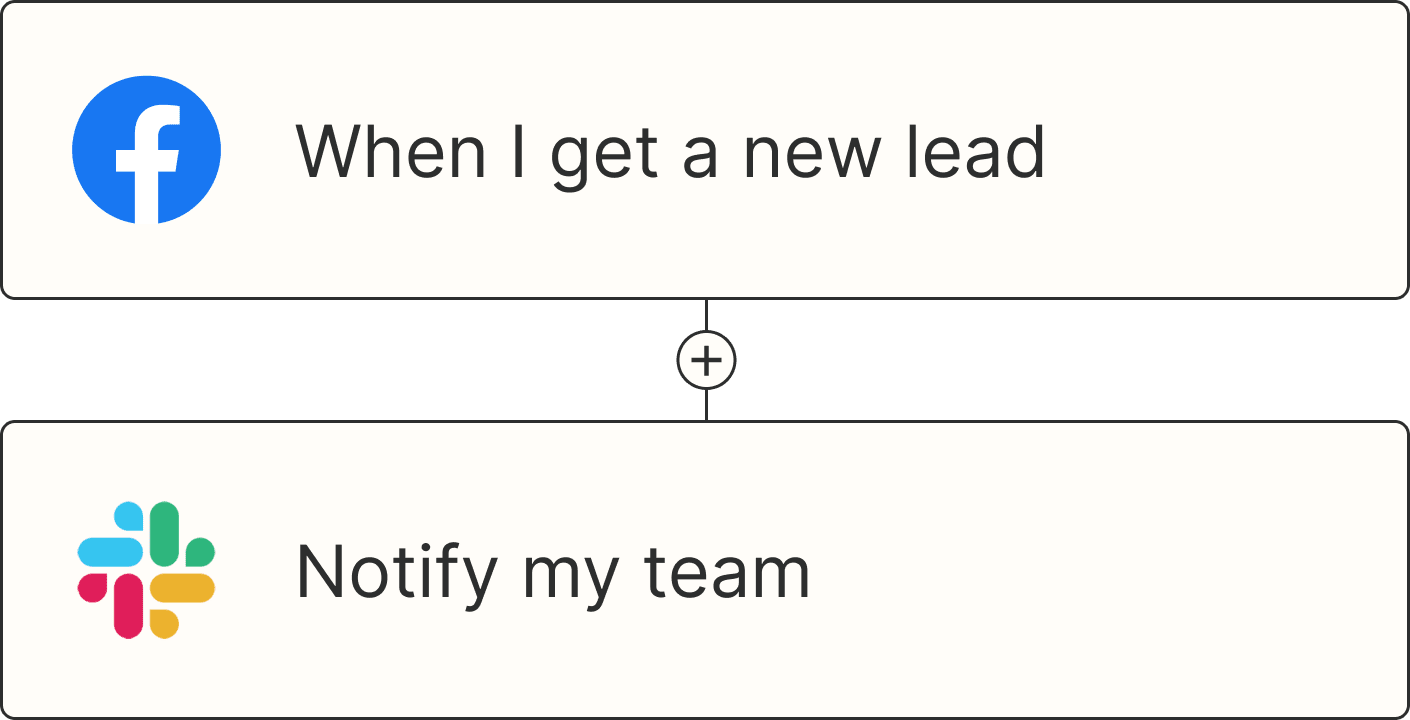Large language models (LLMs) are the main kind of text-handling AIs. ChatGPT, Google's AI answers, and Apple Intelligence are just a tiny handful of the apps that rely on them. If something has a chatbot or some kind of text generator or text summarization built in, it almost certainly uses an LLM.
LLMs have been studied in research labs since the late 2010s, but after the release of ChatGPT (which showcased the power of GPT), they've burst out of the lab and into the real world.
We're now a few years into the widespread availability of LLMs, and with that, they're increasingly useful and powerful. Reasoning models that take extra time to work through hard problems and large multimodal models (LMMs), which are able to handle other input and output modalities, like images, audio, and video, as well as text, are two of the biggest developments. Of course, the rapid pace of AI complicates things even more. So here, I'll break down some of the most important LLMs, LMMs, and reasoning models on the scene right now.
Table of contents:
The best LLMs
There are dozens of major LLMs, and hundreds that are arguably significant for some reason or other. Listing them all would be nearly impossible, and in any case, it would be out of date within days because of how quickly LLMs are being developed.
(I'm updating this list now for the first time in a few months and I have to make some pretty significant changes to add new models, update existing ones, and remove others that are now out of date.)
Take the word "best" with a grain of salt here: I've tried to narrow things down by offering a list of the most significant, interesting, and popular models, not necessarily the ones that outperform on benchmarks (though most of these do). I've also mostly focused on LLMs, LMMs, and reasoning models that you can actually use—rather than ones that are the subjects of super interesting research papers or just teased in marketing materials—since we like to keep things practical around here.
Click on any app in the list below to learn more about it.
LLM | Developer | Multimodal? | Reasoning? | Access |
|---|---|---|---|---|
OpenAI | Yes | Yes | API, Chatbot | |
OpenAI | No | Yes | Open | |
OpenAI | Yes | No | API, Chatbot | |
OpenAI | No | Yes | API | |
Yes | No | API, Chatbot | ||
No | No | Open | ||
Meta | Yes | No | Open | |
DeepSeek | No | Yes | Open, API, Chatbot | |
DeepSeek | No | Yes | Open, API, Chatbot | |
Anthropic | Yes | Yes | API, Chatbot | |
Cohere | No | Yes | API | |
Amazon | Yes | No | API | |
Mistral | No | Yes | API, Chatbot, Open weight | |
Alibaba Cloud | No | Yes | Open, API, Chatbot | |
Z.ai | No | Yes | Open, API, Chatbot | |
Moonshot AI | No | Yes | Open, API, Chatbot | |
Microsoft | No | Yes (Phi-4-mini-flash) | Open | |
xAI | Yes | Yes | API, Chatbot |
What is an LLM?
An LLM, or large language model, is a general-purpose AI text generator. It's what's behind the scenes of all AI chatbots, AI writing generators, and most other AI-powered features like summarized search answers.
Stripped of fancy interfaces and other workarounds, LLMs take a prompt and generate an answer. The chatbots built on top of LLMs aren't looking for keywords so they can answer with a canned response—instead, they're doing their best to understand what's being asked and reply appropriately.
This is why LLMs have really taken off: the same models (with or without a bit of extra training) can be used to respond to customer queries, write marketing materials, summarize meeting notes, and do a whole lot more.
But LLMs can only work with text, which is why LMMs are increasingly popular: they can incorporate images, handwritten notes, audio, video, and more. Many of the biggest models are now LMMs.
What is an open source LLM?
There are three major categories of LLM: proprietary, open, and open source.
Proprietary models like GPT-5 and Claude 4 are some of the most popular and powerful models available, but they're developed and operated by private companies. The source code, training strategies, model weights, and even details like the number of parameters they have are all kept secret. The only ways to access these models are through a chatbot or app built with them, or through an API. You can't just run GPT-5 on your own server.
Open and open source models are more freely available. You can download Llama 4, gpt-oss-20b, Gemma 3, and DeepSeek R1 from Hugging Face and other model platforms and run them on your own devices—and even re-train them with your own data to create your own model. They're also available from multiple third-party API providers so developers can build their own chatbots and apps on top of them. You can dig deep into things like the model weights and system architecture to understand how they work (as best as anyone can).
So what's the difference between open and open source? Well, companies like Meta and Google say that Llama 4 and Gemma 3 are open as though it's the same as open source, but there's a major distinction.
Open source licenses are incredibly permissive. Mostly, you have to agree to make anything you build with it open source as well—and give attribution to the original developers. If you want to build a multi-billion dollar company off open source software or create a crime chatbot that tells people how to rob a bank, you're absolutely free to do so. The police might have some issues with the latter project, but you wouldn't be breaking any software licenses.
Open licenses are still permissive, but they have some additional limits. For example, Llama 4's license allows commercial use up to 700 million monthly users and blocks certain uses. You or I could build something with it, but Apple and Google can't. Similarly, Gemma 3's prohibited use policy, among other things, bans "facilitating or encouraging users to commit any type of crimes." Understandably, Google doesn't want to see unsavory bots "powered by Google Gemma" plastered all over the news.
How do LLMs work?
Early LLMs, like GPT-1, would fall apart and start to generate nonsense after a few sentences, but today's LLMs, like GPT-5, can generate thousands of words that all make sense.
To get to this point, LLMs were trained on huge corpuses of data. The specifics vary a little bit between the different LLMs—depending on how careful the developers are to fully acquire the rights to the materials they're using—but as a general rule, you can assume that they've been trained on something like the entire public internet, every book, newspaper, and magazine that's ever been published, and the synthetic output of earlier AI models at a bare minimum. This is why LLMs can generate text that sounds so authoritative on such a wide variety of subjects.
From this training data, LLMs are able to model the relationship between different words (or really, fractions of words called tokens) using high-dimensional vectors. This is all where things get very complicated and mathy, but the basics are that every individual token ends up with a unique ID and that similar concepts are grouped together. This is then used to generate a neural network, a kind of multi-layered algorithm based on how the human brain works—and that's at the core of every LLM.
The neural network has an input layer, an output layer, and multiple hidden layers, each with multiple nodes. It's these nodes that compute what words should follow on from the input, and different nodes have different weights. For example, if the input string contains the word "Apple," the neural network will have to decide to follow up with something like "Mac" or "iPad," something like "pie" or "crumble," something like "by Charli XCX," or something else entirely. When we talk about how many parameters an LLM has, we're basically comparing how many layers and nodes there are in the underlying neural network. In general, the more nodes, the more complex the text a model is able to understand and generate—though many LLMs use a mixture-of-experts architecture, which makes straight comparisons based on size impossible.
LMMs are even more complex because they also have to incorporate data from additional modalities, but they're typically trained and structured in much the same way.
Of course, an AI model trained on the open internet with little to no direction sounds like the stuff of nightmares. And it probably wouldn't be very useful either, so at this point, LLMs undergo further training and fine-tuning to guide them toward generating safe and useful responses. One of the major ways this works is by adjusting the weights of the inputs and outputs of different nodes, though there are other aspects of it too.

All this is to say that while LLMs are black boxes, what's going on inside them isn't magic. Once you understand a little about how they work, it's easy to see why they're so good at answering certain kinds of questions. It's also easy to understand why they tend to make up (or hallucinate) random things.
What are reasoning models?
Reasoning models like OpenAI o3 and DeepSeek R1 are LLMs that are trained to generate a response using Chain-of-Thought (CoT) reasoning.
When they're given a prompt, instead of replying as quickly as possible, they break the problem down into multiple simple steps and attempt to work through them. If they encounter issues, they can reassess and approach problems from a different angle.

This kind of reasoning requires more computing resources, but it tends to lead to more powerful AI models.
What can LLMs be used for?
LLMs are powerful mostly because they're able to be generalized to so many different situations and uses. The same core LLM (sometimes with a bit of fine-tuning) can be used to do dozens of different tasks. While everything they do is based around generating text, the specific ways they're prompted to do it changes what features they appear to have.
Here are some of the tasks LLMs are commonly used for:
General-purpose chatbots (like ChatGPT and Google Gemini)
Summarizing search results and other information from around the web
Customer service chatbots that are trained on your business's docs and data
Translating text from one language to another
Converting text into computer code, or one language into another
Generating social media posts, blog posts, and other marketing copy
Sentiment analysis
Moderating content
Correcting and editing writing
Data analysis
And hundreds of other things. We're still in the early days of the current AI revolution.
But there are also plenty of things that LLMs can't do, but that other kinds of AI models can. A few examples:
Interpret images
Generate images
Convert files between different formats
Create charts and graphs
Perform math and other logical operations
Of course, some LLMs and chatbots appear to do some of these things. But in most cases, there's another AI service stepping in to assist—or you're actually using an LMM.
With all that context, let's move on to the LLMs themselves.
The best LLMs
GPT-5
Developer: OpenAI
Parameters: Unknown, but likely in the hundreds of billions
Context window: 400,000
Access: API, chatbot
OpenAI's Generative Pre-trained Transformer (GPT) models kickstarted the latest AI hype cycle. GPT-5, the company's latest flagship model (here's a list of all the OpenAI models), is both multimodal and capable of reasoning. It aims to combine all the features of GPT-4o and o3 into a single model. It can work with text, images, audio, and video.
GPT-5 is available through ChatGPT and as an API for developers. As a reasoning model, the options available through the API can get complicated as you have to set how much effort the model can expend to work through difficult problems as well as select whether to use the full model, or the nano or mini versions.
You can pull the power of GPT-5 and other OpenAI models into your work by connecting them to Zapier, making AI a core part of complex, multi-step workflows across your enterprise tech stack. For example, you can route customer support tickets from Zendesk into ChatGPT for summarization and sentiment analysis, then automatically log structured insights in Salesforce and trigger a Slack alert for high-priority cases. Learn more about how to automate ChatGPT, or get started with one of these pre-made workflows.
Automatically reply to Google Business Profile reviews with ChatGPT
Send prompts to ChatGPT for Google Forms responses and add the ChatGPT response to a Google Sheet
Create email copy with ChatGPT from new Gmail emails and save as drafts in Gmail
Zapier is the most connected AI orchestration platform—integrating with thousands of apps from partners like Google, Salesforce, and Microsoft. Use interfaces, data tables, and logic to build secure, automated, AI-powered systems for your business-critical workflows across your organization's technology stack. Learn more.
gpt-oss
Developer: OpenAI
Parameters: 21 billion, 117 billion (as mixtures-of-experts)
Context window: 128,000
Access: Open
OpenAI also has a state-of-the art open LLM. gpt-oss-20b and gpt-oss-120b are both open reasoning models that were trained using the same techniques as OpenAI's other models like o3 and GPT-4o.
Anyone can download, fine-tune, and use these models for almost any purpose (though OpenAI has taken steps to limit the ways they can be used for malicious purposes or to generate harmful information). This is a big deal because since 2019, all of OpenAI's models have been proprietary.
GPT-4o

Developer: OpenAI
Parameters: More than 175 billion
Context window: 128,000
Access: API, chatbot
While GPT-5 has superseded GPT-4o and GPT-4o mini, the two models are still available through the API. GPT-4o is also available through ChatGPT for paid users who prefer the older model.
In the interests of keeping this list manageable, I'm going to lump GPT-4.1, GPT-4.1 mini, and GPT-4.1 nano in here too. They're technically OpenAI's best non-reasoning models, but GPT-4o remains far more widespread and GPT-5 is now the flagship model, so they fall into a weird middle ground.
o3 and o3-mini
Developer: OpenAI
Parameters: More than 175 billion
Context window: 200,000
Access: API
o3 and o3-mini have been superseded by GPT-5. They're still available through the API and still deployed in some apps, so I'm keeping them on this list for now, but they're likely to be deprecated in the coming months.
Gemini
Developer: Google
Parameters: Unknown
Context window: Up to 2 million
Access: API, chatbot
Google Gemini is a family of AI models from Google. The main models—Gemini 2.5 Pro, Gemini 2.5 Flash, and Gemini 2.5 Flash-Lite—are designed to operate on different devices, from smartphones to dedicated servers, and cover a wide variety of uses.
While capable of generating text like an LLM, the Gemini models are also natively able to handle images, audio, video, code, and other kinds of information. They're optimized for a long context window, which means they can process larger volumes of text.
The latest models also power AI features throughout Google's apps, like Docs and Gmail, as well as Google's chatbot, which is confusingly also called Gemini. Google's Gemini models are available to developers through Google AI Studio or Vertex AI.
With Zapier's Google Vertex AI and Google AI Studio integrations, you can access Gemini from all the apps you use at work. Here are a few examples to get you started, or you can learn more about how to automate Google AI Studio.
Send prompts in Google Vertex AI every day using Schedule by Zapier
Generate draft responses to new Gmail emails with Google AI Studio (Gemini)
Create a Slack assistant with Google AI Studio (Gemini)
Gemma
Developer: Google
Parameters: 270 million, 1 billion, 4 billion, 12 billion, and 27 billion
Context window: 128,000
Access: Open
Google Gemma is a family of open AI models from Google based on the same research and technology it used to develop Gemini. The latest version, Gemma 3, is available in five sizes: 270 million, 1 billion, 4 billion, 12 billion, and 27 billion parameters. There is also a version called Gemma 3n designed for mobile architectures.
Llama

Developer: Meta
Parameters: 109 billion, 400 billion, 2 trillion (all as mixtures-of-experts)
Context window: 10 million
Access: Open
Llama is a family of open LLMs from Meta, the parent company of Facebook and Instagram. The newest Llama 4 models (including Scout, Maverick, and Behemoth [in preview]) are multimodal and use a mixture-of-experts structure. Scout has a 10M context window, which is bigger than anything else available at the moment.
In addition to powering most AI features throughout Meta's apps, the Llama "herd" is one of the most popular and powerful open LLM families, and you can download the source code yourself from GitHub. Because it's free for research and commercial uses, a lot of other LLMs use a Llama model as a base.
R1
Developer: DeepSeek
Parameters: 671 billion (as a mixture-of-experts)
Context window: 128,000
Access: Open, chatbot, API
DeepSeek R1 caused a major stir when it launched as it was the first state-of-the-art reasoning model developed by a Chinese tech company. It was created on more limited computer hardware with a far smaller budget and released as an open model.
R1 has been continually updated since launch, though it looks like it will soon be deprecated in favor of DeepSeek V3.1.
V3.1
Developer: DeepSeek
Parameters: 671 billion
Context window: 128,000
Access: Open, chatbot, API
DeepSeek V3.1 is DeepSeek's equivalent of GPT-5. It's a state-of-the-art open LLM that can optionally reason, although it doesn't have any multimodal features. It now offers more powerful reasoning features than R1. It was also developed using more limited computer hardware and for less financial investment than typical LLMs.
Claude

Developer: Anthropic
Parameters: Unknown
Context window: 200,000
Access: API, chatbot
Claude is arguably one of the most important competitors to GPT. Its three hybrid reasoning models—Claude Sonnet 4.5, Claude 3.5 Haiku, and Claude Opus 4.1—are designed to be helpful, honest, harmless, and crucially, safe for enterprise customers to use. As a result, companies like Slack, Notion, and Zoom have all partnered with Anthropic. Claude Sonnet 4.5 is now considered one of the best AI coding models available.
Like all the other proprietary LLMs, Claude is only available as an API or through its official chatbot and other products, though it can be further trained on your data and fine-tuned to respond how you need.
And when you connect Claude to Zapier, you can embed advanced AI directly into your enterprise workflows. For example, you can have Claude analyze long-form research reports stored in Google Drive, generate concise executive summaries, and automatically distribute them to stakeholders in Slack or Notion. Learn how to automate Claude, or get started quickly with one of these pre-built workflows.
Generate an AI-analysis of Google Form responses and store in Google Sheets
Write AI-generated email responses with Claude and store in Gmail
Post new Slack channel messages to Anthropic (Claude) immediately
Command
Developer: Cohere
Parameters: Command R7B has 7 billion; the other models are unknown
Context window: Up to 128,000
Access: API
Like Claude, Cohere's Command models are designed for enterprise users. Command A Max, Command A Reasoning, Command R7B, Command R, and Command R+ offer an API and are optimized for retrieval augmented generation (RAG) so that organizations can have the model respond accurately to specific queries from employees and customers.
As a result, companies like Oracle, Accenture, Notion, and Salesforce use Cohere's models.
Nova
Developer: Amazon
Parameters: Unknown
Context window: Up to 1 million
Access: API
Amazon Nova is a family of frontier models available on Amazon Web Services. Despite a slow start from Amazon, the current models—including Amazon Nova Premier, Pro, Lite, and Micro—perform competitively in a range of benchmarks. Given AWS's prominence in cloud computing, Amazon Nova models may end up proving popular.
Magistral
Developer: Mistral
Parameters: 24 billion for Magistral Small, unknown for Magistral Medium
Context window: 128,000
Access: API, chatbot, open weight
Mistral is one of the largest European AI companies. Magistral is its latest family of frontier models and its first to support reasoning. Magistral Small is a 24 billion parameter open model while Magistral Medium is a larger and more powerful enterprise-focused model.
Qwen
Developer: Alibaba Cloud
Parameters: 0.5 billion, 1.5 billion, 3 billion, 7 billion, 14 billion, 32 billion, 72 billion, 235 billion
Context window: Up to 1 million
Access: Open, API, chatbot
Qwen is a family of AI models from Chinese tech giant Alibaba. There are dozens of open models available across the different Qwen3 and Qwen2.5 families, including models tailored for vision, coding, math, and a million-token context window.
The highest performing model, Qwen3, matches or exceeds models like DeepSeek V3.1 and Claude 4 Sonnet across a wide range of benchmarks.
GLM-4.5
Developer: Z.ai
Parameters: 106 billion and 355 billion (as mixtures-of-experts)
Context window: 128,000
Access: Open, API, chatbot
GLM-4.5 and GLM-4.5-Air are Chinese AI developer Z.ai's flagship models. They both use a mixture-of-experts architecture, support reasoning, and are designed for agentic workflows. They are among the top performing open models.
Kimi K2
Developer: Moonshot AI
Parameters: 1 trillion (as a mixture-of-experts)
Context window: Up to 256,000
Access: Open, API, chatbot
Kimi K2 is Chinese AI developer Moonshot AI's flagship model. It uses a mixture-of-experts architecture, supports reasoning, and is designed for tool use and other agentic tasks. It is among the highest performing open models.
Phi-3 and Phi-4
Developer: Microsoft
Parameters: 3.8 billion, 7 billion, and 14 billion
Context window: Up to 128,000
Access: Open
Microsoft's Phi-3 family of small language models are optimized for performance at small size. The 3.8 billion parameter Mini, 7 billion parameter Small, 14 billion parameter Medium, and 14.7 billion parameter Phi-4 all outperform larger models on language tasks. There's now a reasoning model called Phi-4-mini-flash reasoning.
The models are available through Azure AI Studio, Hugging Face, and other open model platforms.
Grok
Developer: xAI
Parameters: Unknown
Context window: 2 million
Access: API, chatbot
Grok, an AI model and chatbot trained on data from X (formerly Twitter), originally didn't warrant a place on this list on its own merits. Grok 4, however, offers state-of-the-art performance and reasoning abilities. There's also a smaller version available called Grok 4 Fast.
Still, while its performance now matches other models, it mostly generates headlines because it was developed by xAI, the AI company founded by Elon Musk. (Read more in our comparison of Grok vs. ChatGPT.)
When you connect Grok to Zapier, you can make Grok a hands-on collaborator inside the rest of your tech stack. Zapier lets you trigger Grok from all the other apps you use at work, so you can bring the power of AI into all your software. Learn more about how to automate Grok, or get started with one of these pre-made templates.
Use Grok to run hourly checks for trending content online and send via email
Enrich lead data from HubSpot with Grok and add to Zapier Tables
Create content outlines with Grok from Notion briefs and add to a Notion page
Why are there so many LLMs?
Until a few years ago, LLMs were limited to research labs and tech demos at AI conferences. Now, they're powering countless apps and chatbots, and there are hundreds of different models available that you can run yourself (if you have the computer skills). How did we get here?
Well, there are a few factors in play. Some of the big ones are:
With GPT-3 and ChatGPT, OpenAI demonstrated that AI research had reached the point where it could be used to build practical tools—so lots of other companies started doing the same.
LLMs take a lot of computing power to train, but it can be done in a matter of weeks or months. Innovations from Chinese companies have also shown that powerful models can be developed on limited hardware with clever innovations and optimizations.
There are lots of open models that can be re-trained or adapted into new models without the need to develop a whole new model.
There's a lot of money being thrown at AI companies, so there are big incentives for anyone with the skills and knowledge to develop any kind of LLM to do so.
There's a bit of an arms race going on between American and Chinese companies.
What to expect from LLMs in the future
I think we're going to continue to see a lot of innovation and new LLMs in the near future. Open models from Chinese tech companies like DeepSeek are now incredibly competitive with closed models from American tech companies. Major tech companies like Apple, Amazon, IBM, Intel, and NVIDIA also have compelling reasons to continue developing their own LLMs, even if they're only used internally.
I also think we're going to continue to see more efficient LLMs tailored to run on smartphones and other lightweight devices. Google started this with Gemini Nano, and while Apple Intelligence has attracted some criticism, it still runs natively on edge computing devices.
Other than that, who can tell? Three years ago, I definitely didn't think we'd have powerful AIs like ChatGPT available for free. Maybe in a few years, we'll have artificial general intelligence (AGI).
Related reading:
This article was originally published in January 2024. The most recent update was in October 2026.








